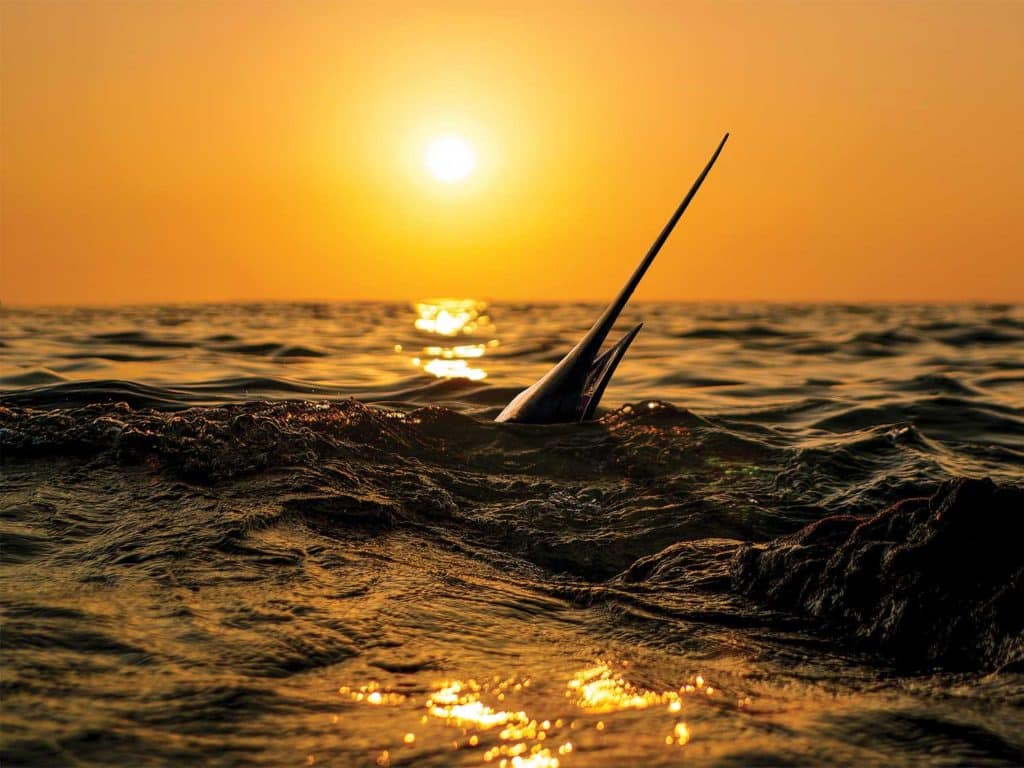
One of fishing’s greatest and most universal traditions is that of nostalgia for “the good ol’ days.” For as long as there has been sport fishing, young captains have sat awestruck, listening to old-timers regale them with tales of incredible catches. This tradition is as prevalent as our beloved ballyhoo.
These days, however, a central part of this dynamic is changing. The offshore fishing in parts of present-day United States is as good—if not better—than it has been in decades. While we might not be at a stage to swap stories with Ernest Hemingway, the here and now is something of a Golden Age, actualized in the past 30 years, as it relates to bluewater fishing on the East and Gulf coasts of the US.
Watch: The bonito strip is a deadly teaser for all species, including tuna.
You could easily make the argument that 2020 was the best blue marlin fishing year ever in the Gulf of Mexico. Fleur de Lis’ Capt. Scooter Porto set the Gulf blue marlin season record by catching an incredible 63, and he also bagged the new Alabama state record for angler Ginger Myers. The 2020 tournament release leaderboards looked more like a sailfish tournament’s than a GOM marlin contest. In December, Capt. Kevin Deerman and his Draggin’ Up team released eight blues and a white on a single trip out of Galveston, Texas—in the middle of winter, which is hardly considered blue marlin season.
Gulf Coast blue marlin fishing veteran and Doxey Tackle owner Capt. Ryan Doxey assesses the situation by saying, “The evolution of techniques and technology has come a long way,” and says he’s not sure there necessarily are more fish than before, but in the past few years, they’ve been seeing more—in quantity and quality—and the fleet is getting better at catching them. And this is reflected in the tournament numbers.
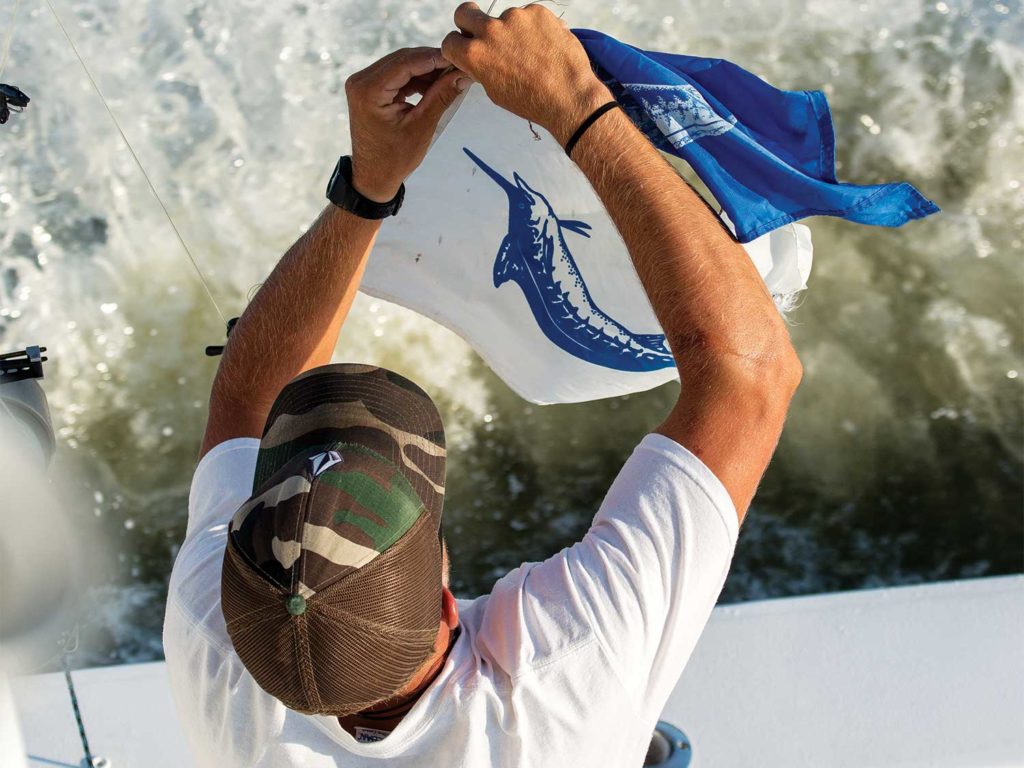
“When I started tournament fishing, three blues might win,” Doxey explains. “This year in Biloxi, the winning boat had 10. The second-place boat, Reel Fire, had eight. Third place had seven, another boat had seven, and there were several boats with six. I personally watched 17 fish caught in that tournament. I have never seen a bite like that.”
Perhaps no captain’s 2020 catch log is more indicative of how great the Gulf blue marlin fishing is right now than Porto’s. Based out of the Wharf in Orange Beach, Alabama, he recalls these facts: “We caught 63 blues out of 90 bites. On one trip during the Mississippi Gulf Coast Billfish Classic tournament, we caught 7 of 9 blues. On another four-day trip, we released 11. And on our last trip of the year, we took our wives. It was a two-day trip, right out front, and we went 12 of 14 on blue marlin. All of them were good fish—three over 500 [pounds]. Most of them were between 300 and 500.”
New Structures Transform Fisheries
Veteran captains Jeff Shoults and John Cochrane provide context to perhaps the most noticeable addition to offshore fishing in the Gulf of Mexico: oil rigs. It’s easy to forget that these rigs were not always there. Depending on where in the Gulf you fish, the rigs may have just come into play some 20 years ago.
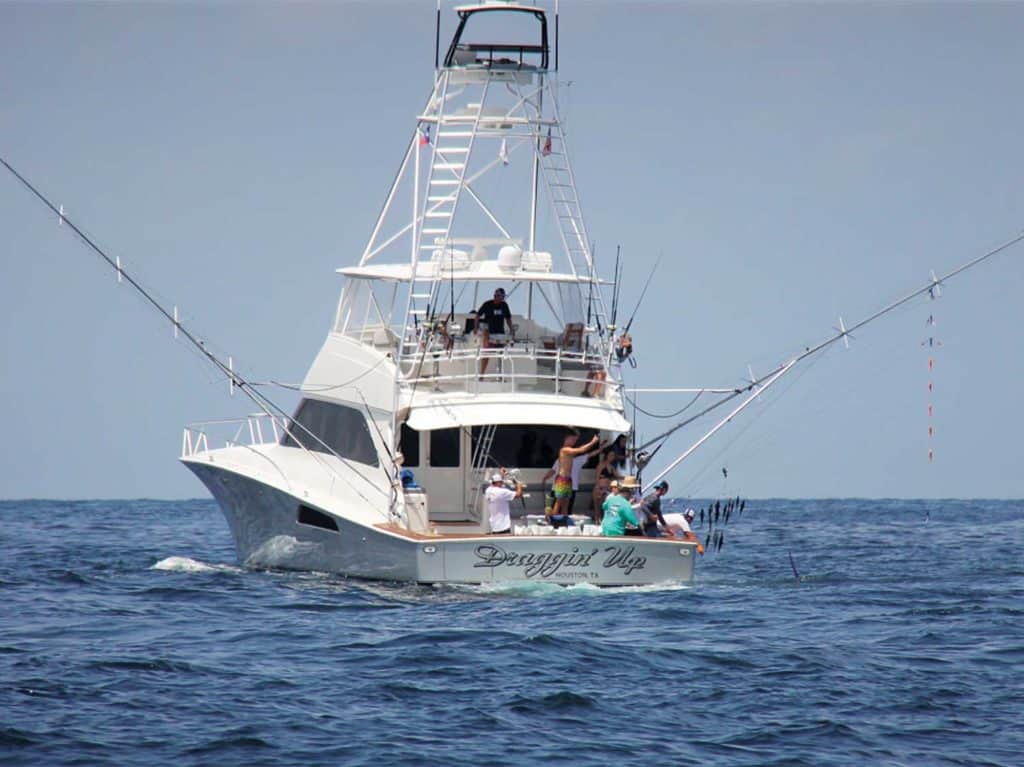
“The biggest differences now are the techniques we’re using while targeting fish around structure, and the oil rigs make a huge difference. They are like bottom spots over sand. Thirty years ago, there were just a few rigs around, and we trolled around them,” says Shoults, who has run the 66-foot G&S Mollie, based in Destin, Florida, for the past three decades.
“Back in the early ’90s, if you caught three blues in one day at a platform, it was a really big deal. But now it’s no big deal at all to catch three in one day.”
In 1996, Capt. John Cochrane set the Gulf blue marlin record with 31 in one year fishing out of Galveston, Texas, on the 46-foot Merritt Billy B. Cochrane and owner Bill Lyons made a habit of live-baiting the newly constructed rigs. “We used to do it a lot; that was all that the boss wanted to do,” Cochrane says. “We were fishing the rigs when they first put them out there—when they were still floaters—and back in the early ’90s, if you caught three blues in one day at a platform, it was a really big deal. But now it’s no big deal at all to catch three in one day.” Cochrane also insists that the number of rigs make accessing the fish more manageable because they concentrate around them, thus making it a smaller area to work.
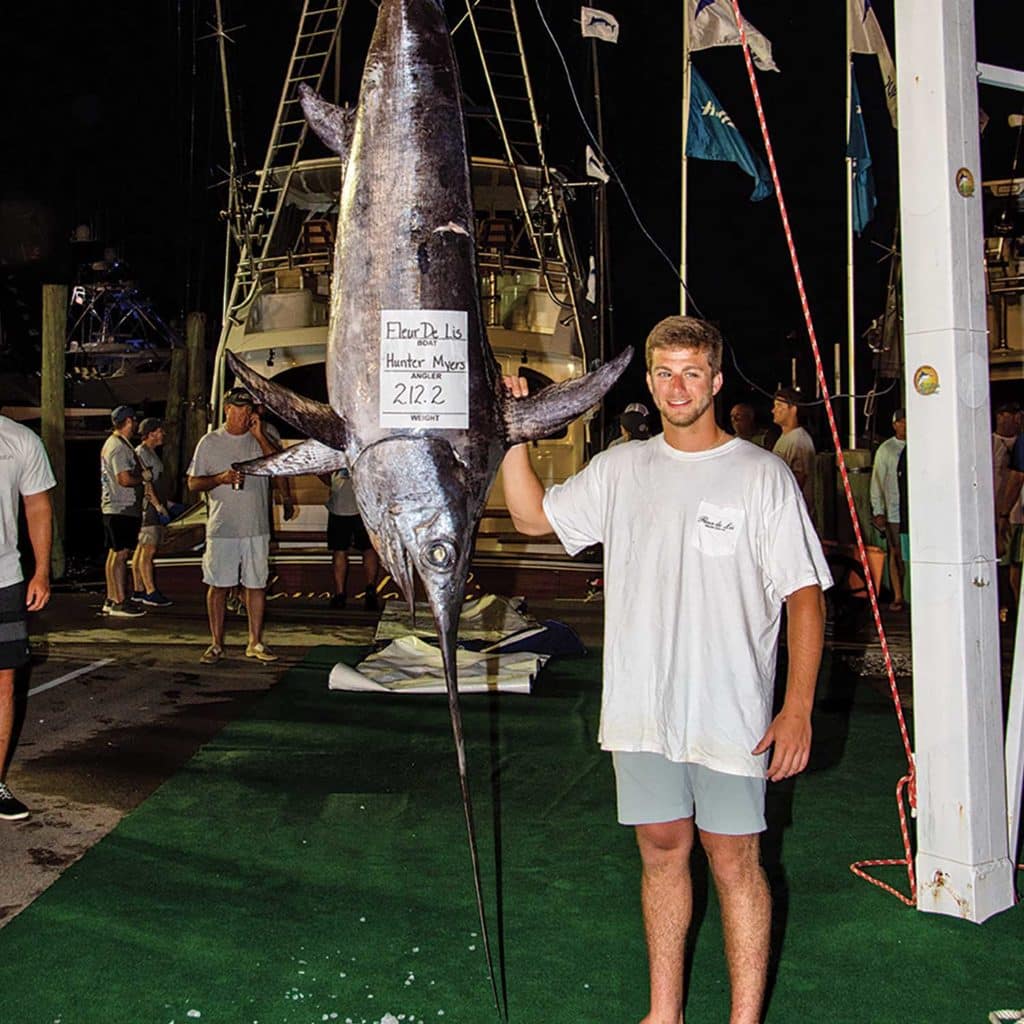
Technological Advances
A decade ago, blue marlin fishing in the Gulf of Mexico was primarily a lure-dragging affair. These days you couldn’t toss a beer can off an oil rig without hitting a live-baiter, and the results speak for themselves.
“We have doubled our fish numbers,” Porto says. “It used to be that if you caught 20 blue marlin in a year trolling, that was a good year. Now the combination of live-baiting and the use of omnidirectional sonars is pretty deadly.”
The specific sonar Porto refers to is the Furuno Omni’s full-circle scanning, which makes it possible to mark marlin in near-real time.
“We are seeing larger fish coupled with better fishing,” he says, “and I think live-baiting has a lot to do with it. You are a lot more likely to get a bite out of a big fish, especially when you are using a 10- to 15-pound blackfin rather than a lure.”
“Twenty years ago, blue marlin fishing meant fishing 30 miles out front, but with boat advancements, I’m able to tournament fish as far as 300 miles, one way, making the Gulf open game.”
Shoults agrees, adding: “Sonars are a big thing. You pull up to a rig, and if there’s a blue around, you’ll see him. You’re not just trolling around blindly.”
He also explains that boats today have the fuel capacity and speed to get out to the rigs in record time. “Twenty years ago, blue marlin fishing meant fishing 30 miles out front, but with boat advancements, I’m able to tournament fish as far as 300 miles, one way, making the Gulf open game.”
Shoults continues by describing that preparing your fishing plan 30 years ago involved quite a few more unknowns than today. “We used to just leave the dock and hope to be the first to find the blue water. There were planes that would fly out and film the conditions, and you could buy tapes for a hundred bucks. At that time, we really thought that was something, but then came the charts, and now the satellites.” But interpreting all of this real-time information requires lots of study. Quite a bit goes into it for the modern Gulf captain, and it has also affected what an average weekend fisherman might expect. “Technology has definitely made it a lot easier for the average guy to buy a boat and catch blue marlin,” he admits.
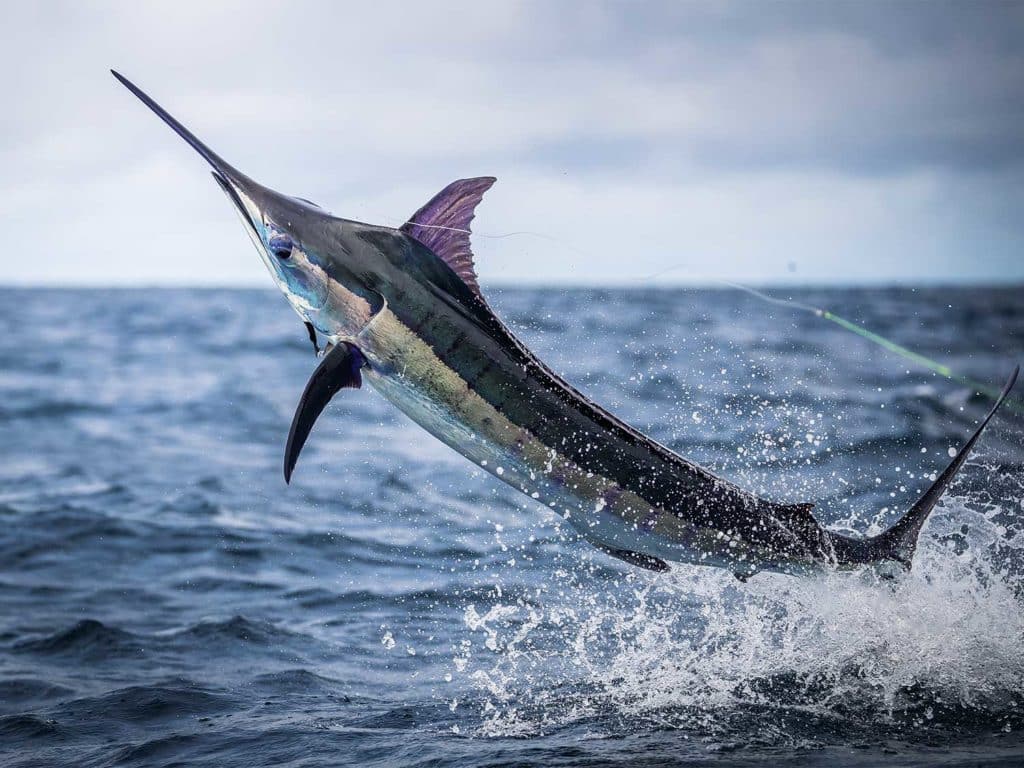
The Swordfish Revolution
Although catching blues off oil rigs is cool, no fish better represents the present Golden Age than the broadbill swordfish. Three decades ago, swordfish were largely an afterthought on much of the East and Gulf coasts and were targeted at night. And besides South Florida, much of the swordfishing in the States was as much the product of boatspeed as it was the desire to catch this mighty gladiator.
Caught fish were primarily small individuals, and landing a 400-pounder was considered a once-in-a-lifetime accomplishment. Fast-forward to 2021, and the daytime swordfish revolution has taken the Gulf and East coasts by storm. From New York to Texas, boats are not only consistently catching swords, but they’re also catching them in numbers. And they aren’t small ones either.
Capt. Fin Gaddy runs the charter boat Qualifier out of the Oregon Inlet Fishing Center in the Outer Banks of North Carolina. Gaddy is also a member of the board of directors for The Billfish Foundation and has a long history of fishing. “Thirty years ago, we did very little swordfishing. A few people would stay out overnight to be closer to the marlin grounds when the bite was good, and because boats were slow, they would have to do an overnighter,” Gaddy explains. “They would swordfish to pass the time.
“Now, most swordfishing is done during the daytime—you couldn’t reach the bottom (1,200 feet) 20 years ago—and bagging a big fish is relatively common.” Gaddy also credits adaptations to techniques and advances in technology, backing it up with a great trip he took in fall 2020, where he went 4-for-5 during the day.
One Shot Charters’ Capt. Adam Peeples, out of Fort Walton Beach, Florida, averages between 30 and 35 swordfish trips per year. “We run mostly day trips,” he says. “On an average day in the spring and summer, we’d expect three to five swordfish bites; our boat record is nine in one day. It’s been that way since I started daytime fishing six years ago. When I got into it, it was like a lightbulb moment; I thought, This is incredible.”
Peeples says his swordfish prime time is April and May, when there are better numbers of larger females around, but that they are there all year long. “I’ve caught them every month of the year,” he says, “and I’ve talked with the old-timers, who say it wasn’t like this 20 years ago, and no one would even fish for them at night. They said it wasn’t worth it.”
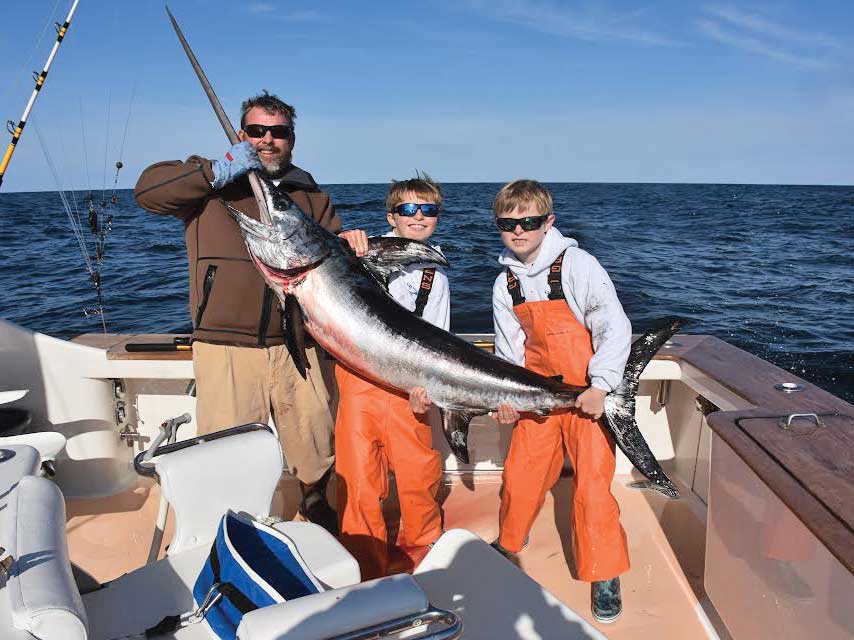
When it comes to fishing in the United States, Capt. Bouncer Smith is something of a national treasure. He spent his entire 50-plus-year fishing career in South Florida, which is perhaps the world’s hub for swordfishing.
Smith provides perspective on the changes through time, believing that the best period for South Florida’s swords was between 1998 and 2004. It’s still really good today, but that hasn’t always been the case. “The worst times were from 1978/79 until 1995. Nobody [in Miami] gave a single thought to going swordfishing—it just wasn’t happening. They were so overfished, and the longliners were everywhere,” he recalls. “There were so many longlines deployed that if you were recreationally drifting baits at night, you would get hung up on longline gear, or you’d hook a fish that would get tangled. It was so bad that the longliners would tangle each other. Miami to Bimini was like a checkerboard of longlines, and they had to call one another on the radio just to coordinate their drift efforts.”
Thankfully, today’s swordfishing is defined by daytime fishing, giant fish, and recreational swordfishing up and down the coast, not by a web of longlines.
Conserving the Mid-Atlantic
Many places on the East Coast, Gulf Coast and in the Caribbean have enjoyed a resurgence of white marlin fishing in recent years, but perhaps no place better embodies this climb than the US’s own mid-Atlantic region.
Historically speaking, the fishing as of late has produced four of the best years ever. According to Maryland’s Ocean City Marlin Club—an institution with catch records dating to the 1930s—this spike culminated in 2010, when the yearly tally of white marlin caught by club boats out of Ocean City was an astounding 2,500 releases. Billfisher was the top-reporting boat that year with over 240 releases—including the best day of white marlin fishing ever on dead baits with 57.
This great fishing, however, has not always been the case. OCMC president Capt. Franky Pettolina recalls several years in the 1980s when the club didn’t even release 200 fish. These markedly lower catch numbers were in spite of putting in quite a bit of time on the white marlin grounds.
Capt. Harvey Shiflet runs the 61-foot Spencer Anticipation out of Virginia Beach, Virginia, and has also been at it for 40 years. “When I started, we were white marlin fishing with big tackle, fishing 50- and 80-wides with wire leaders; we were out to lunch,” he recalls of the now-considered tackle overkill.
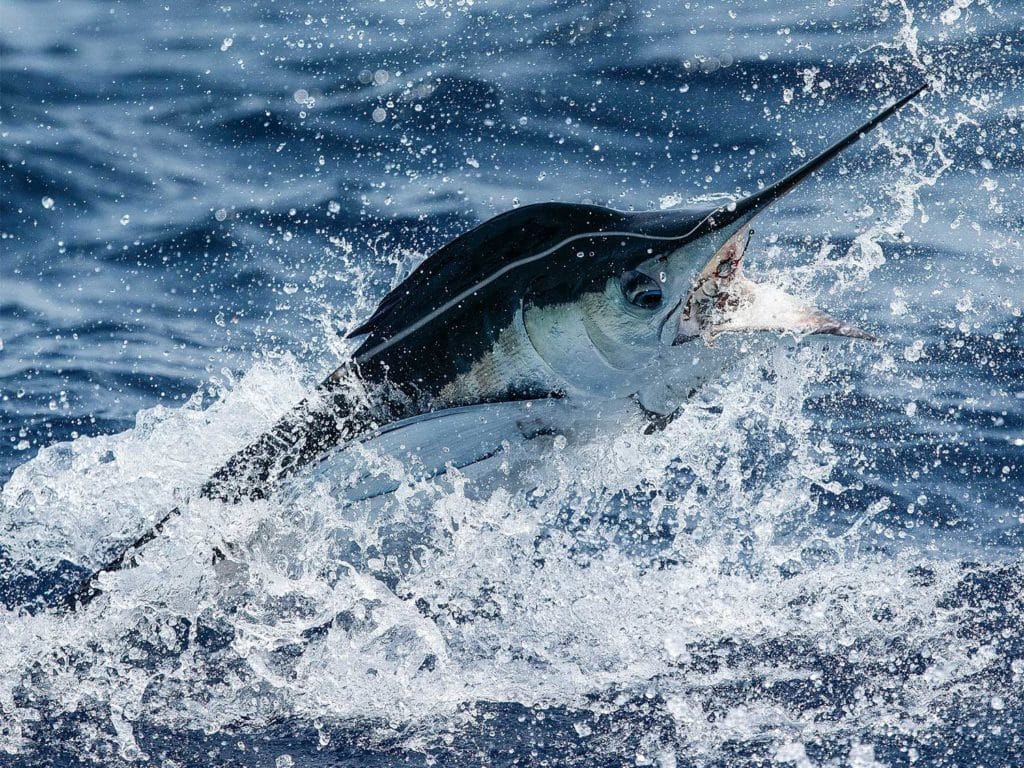
“In the past 20 years, dredges have taken hold. It used to be the dredge guys versus the no-dredge guys,” saying that the shift in mindset has been evolving, and giving credit to the teams who are consistently progressing with the times and getting better it as well: “We have transformed from a captain-and-mate concept to a team concept; this makes the anglers better too.”
So how does a good day of white marlin fishing today compare to a good day in, say, 1990? Shiflet says a banner day in 1990 was catching 12 whites, but today, that number is around 20. And just as our techniques have continued to improve, so has the fishing.
Pettolina credits conservation measures as a large part of this booming fishery, insisting that trolling the same areas in the ’80s and ’90s would never give you the opportunity of double-digit-shot days, but fishing hard in the present day should get you some during the height of the season, which is mid-August through mid-September.
“I get excited about it—it’s absolutely a Golden Age. The quality of bluewater fishing here in the mid-Atlantic is significantly better than I could have told you it was in 1991.”
“I get excited about it—it’s absolutely a Golden Age. The quality of bluewater fishing here in the mid-Atlantic is significantly better than I could have told you it was in 1991,” the veteran captain says, as he recalls wearing shirts from The Billfish Foundation that read: How many will be left in 2001?
Sure, the modern sportboat includes more computing power than the first space station (if this is an exaggeration, it’s not much of one); Furuno’s Omni sonar makes it possible to actively pursue fish you might see before they see you; and yes, captains and crews are more proficient than ever with live baits in the Gulf, and the use of braided line and sophisticated rigs to deploy daytime-swordfish baits into the benthos of the Gulf of Mexico and Eastern Seaboard.
These innovative transformations coincide with a four-decade-long commitment to conservation by the sport-fishing industry. Something we are doing is working, and this Golden Age of fishing we are fortunate enough to enjoy for the time being just might be the result.
Six Key Events That Helped Trigger America’s Golden Age of Fishing
- The Billfish Foundation was formed, and the billfish catch-and-release ethic was not only introduced, but also has become standard practice.
- Circle hooks have risen to prominence when fishing with live or dead bait.
- The commercial harvest of marlin is prohibited.
- There is an annual 250-fish recreational harvest quota established by NOAA for white and blue marlin in the Gulf of Mexico and off the US East Coast from Maine to Texas.
- The United States’ commercial-fishing industry is among the most regulated and sustainably focused in the world.
- The Florida Straits and parts of the Gulf of Mexico have been closed to longliners targeting swordfish.







